Pirouettes are my favourite step in ballet! Apart from being fun to do, they are also exciting to watch. The wind in your hair and that feeling in your tummy, plus when you do more than one at a time you get a little dizzy.
Pirouette in French means to turn, and to do a pirouette without falling over you need to start with learning spotting.
What is spotting?
Spotting helps avoid dizziness when you are spinning around on the spot. To practice spotting; pick a spot at eye level and start to turn slowly, maintaining focus on that spot until the last possible second, then whip your head around and come back to focus on the same spot with your eyes.
There are so many ways you can practice spotting but it’s always best to start slow, turning one or two times in a row and build up speed as you feel more comfortable. Take it slowly to avoid falling on the floor!
Before you pirouette
First things first, you’ll need a good place to practice. Find a nice smooth floor, wooden floors are great or even carpet and make sure you won’t knock anything over or fall onto anything that could hurt.
Then you’ll need a pair of ballet shoes or socks so your foot won’t stick to the floor. If you find your foot is sticking to the floor try a different surface or shoe to avoid twisting and possibly hurting your knee.
It’s probably a good idea not to practice just after a big meal. Spinning around can make you feel a little queasy if you’ve just eaten.
To make pirouetting more fun I like to practice in a nice full skirt so it flares out when you spin (we think our ballet tutus are perfect for pirouettes).
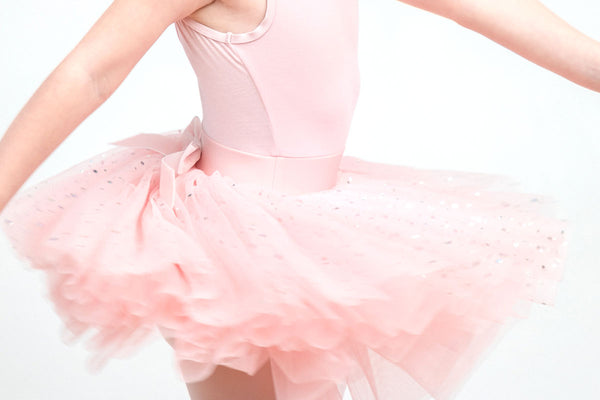
How to do a pirouette
To practice your pirouette here is my step-by-step breakdown.
Step 1:
Position your legs in a wider 4th position with your left foot in front and right foot behind. Your arms are positioned with your left arm out to the side and right arm bent in front.
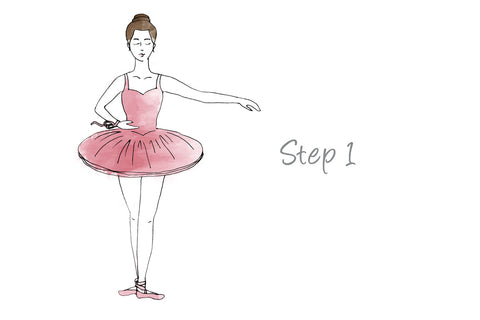
Step 2:
Bend your knees so you are in a plié.
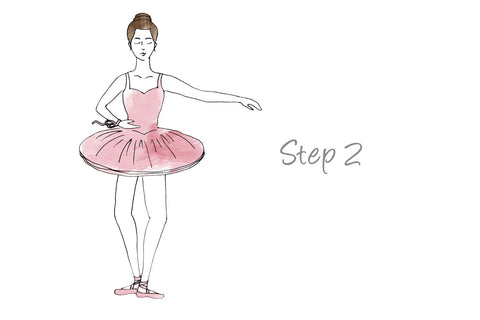
Step 3:
Then rise onto the ball of your left foot (a demi point or half point). This is called relevé.

Step 4:
Push off with your right foot and twist your upper body swinging your arms to create momentum and pirouette towards the right.

Step 5:
As you begin to spin, raise your right foot to lightly touch your knee and bring your left arm in to create 2nd position with your arms.
*Don’t forget your spotting. Keep your eyes focused on your chosen spot until the very last second then turn your head back to the spot quickly to not lose balance.
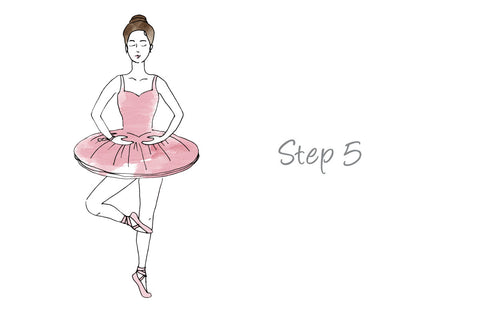
Step 6:
Land back at 4th position in plié. And you are ready to try again!
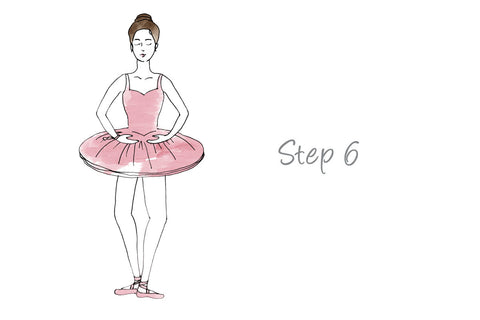
Don’t be disheartened if you fall out of your pirouette, it just takes practice. Each time you practice it will get easier, smoother and more fun.
If you have tried to pirouette more than three times in a row shake out your legs and arms to reset and refocus. Then you can start practicing again.
Important things to remember
Maintain your posture. It’s much easier to pirouette when you are standing tall and straight. If you start to bend at your hips you are more likely to wobble and fall out.
Keep your movements smooth. A pirouette is a strong smooth movement so try to avoid any snapping of your legs or arms as this can make your pirouette a little jerky and off-balance.
Practice makes perfect. Like all the best bits of ballet, a pirouette takes time and lots of practice to perfect, but it’s definitely worth the effort!
Keep practicing! If you have any questions please comment below.


Leave a comment